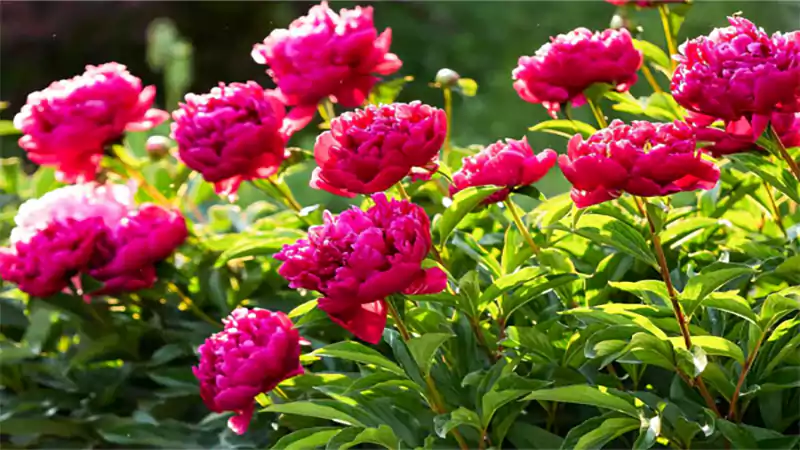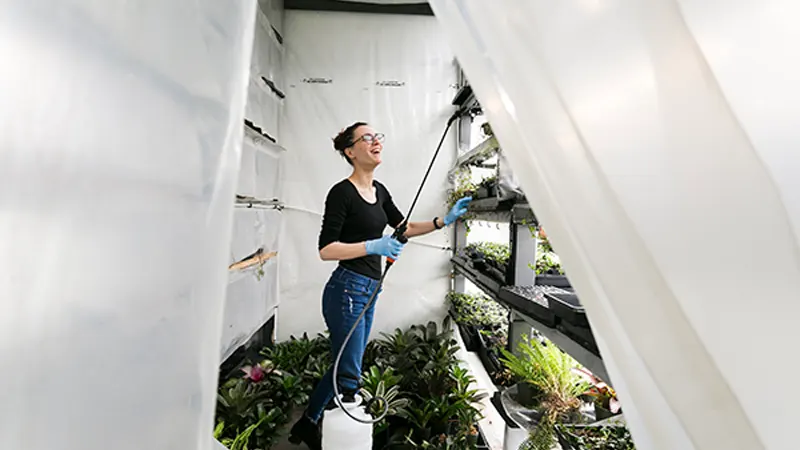Does peppermint instantly remind you of the refreshing essence of toothpaste and chewing gum? Meet the peppermint plant—a herbaceous perennial with verdant beauty and endless benefits.
Imbibed in its roots dating as early as 1550 BC, early history mentions it in Greek mythology by Roman philosophers, Jesus in the Bible, and Monks in the Middle Ages.
Commonly used for culinary and medicinal purposes, this companion plant is also suitable for edible gardens or pollinator gardens and brings a cottage charm to your balcony gardens and outdoor living areas.
Take a tour of this article to gain insights into this refreshing perennial, its benefits, types, uses, care, and harvesting tips, and common roadblocks.
Peppermint Plant – Origin and History

You must be thinking, “Where does peppermint come from?”
Peppermint is a hybrid species of mint, a cross between watermint and spearmint. It is a herbaceous perennial that is indigenous to Europe and the Middle East, but it is now being cultivated across many regions of the world, including Asia and the United States.
History Behind the Plant
Do you know there is an enticing story behind how this herb came into existence?
Originating from the Mediterranean lands, these hardy perennials get their name from Greek Mythology. It is believed that the god Hades was having an affair with a nymph called Mynthe. When his wife found out about the affair, she cursed Mynthe and transformed her into a common herb that grew like a weed that mostly stayed underfoot.
Seeing this misery, Hades altered the curse and added a sweet and calming aroma to Minthe so that it reminds others of her presence when they walk over.
Similar to plants like Ginkgo trees, Palm Cycas Revoluta, Horsetails, or Cinnamon trees, it has been a celebrated herb for decades and outlines an impeccable journey from ancient civilisations to modern-day uses.
- According to the Encyclopedia, many Egyptian pyramids showed remains of dried peppermint leaf. It was widely used as an herbal remedy for indigestion back then.
- The ancient Greeks and Romans valued this species for its stomach-soothing properties.
- During the 18th century, it gained popularity in Western Europe as a natural cure for vomiting, nausea, respiratory infections, and menstrual disorders.
- Modern-day use of this refreshing perennial is widespread and cultivated commercially, mostly as culinary and medicinal plants.
Its prehistoric presence and uses truly make it a testament to time. Journeying from ancient civilisations to transforming your home gardens, this species has so many benefits in store for you.
Taxonomic Outline of the Peppermint Plant
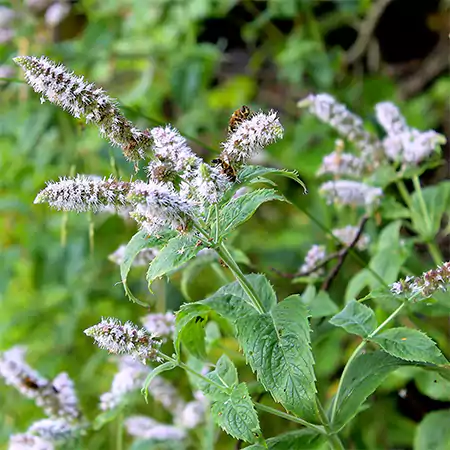
Scientifically known as Mentha x piperita, it is praised for its square stems, stalked, dark green leaves with wavy or entire margins and serrated edges, and oblong clusters of lavenderish pink flowers.
The genus Mentha comprises more than 25 species, among which Mentha piperita variety is the most common and celebrated.
To further learn about its botanical roots and profile, let us quickly rifle through its taxonomic outline.
| Kingdom | Plantae |
| Clade | Tracheophytes |
| Clade | Angiosperms |
| Clade | Eudicots |
| Clade | Asterids |
| Order | Lamiales |
| Family | Lamiaceae |
| Genus | Mentha |
| Species | M. x Piperita |
| Plant Type | Herbaceous Perennial |
Sometimes also referred to as Brandy mint, Lily-rail, Mentha ‘peppermint’, or Curled mint, it usually grows up to a size of 30-90 cm tall and spreads horizontally 90-150 cm wide.
Whether you plant it solo or group it with other companion indoor plants, it can elevate your home decor and reward you with countless benefits.
Peppermint Versus Spearmint Plant – A Confusion Solved
Do not be confused between Peppermints and Spearmints. They belong to the Mentha family and may look the same, but they are different in taste and use.
- Peppermint (Mentha x piperita) has a refreshing, cool flavour and higher menthol content (40%), making it ideal for teas, oils, and medicines.
- Spearmint (Mentha spicata) contains comparatively less menthol (0.5%) and has a sweeter, milder taste, making it perfect for salads and drinks.
Key Benefits of Planting Peppermint
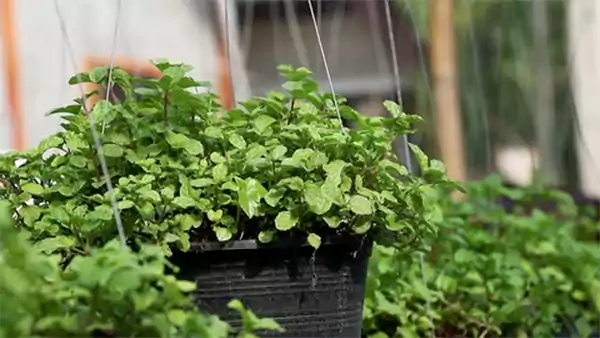
The robust nature and distinctive characteristics make M. piperita a valuable addition to your home gardens and provide an aesthetic appeal as well as culinary and medicinal benefits.
Here are some uses and functions of these botanical marvels.
- Refreshing Fragrance: These mint varieties have a refreshing fragrance and a cooling essence, which creates an invigorating environment.
Aromatic gardens comprising Tuberose, Honeysuckle, Rose, night-blooming Jasmine, or Lilac trees, these lamb mints are a favourable addition to turn your garden into a scented bliss.
- Easy Maintenance: Whether you are a seasoned gardener or novice, these herbs are friendly, require minimal care and attention, and can reward you with their beauty and benefits.
- Pollinator Friendly: The nectar-rich flowers of M. piperita attract various pollinators to your garden, like bees, butterflies, hoverflies, and predatory wasps, which help pollinate nearby greens and prey on garden pests.
- Repels Pests and Insects: Curled mints are found to enhance the quality of soil and, at the same time, have strong refreshing scents that help in repelling pests and flies from damaging the other greens.
- Culinary Uses: The cool, minty flavour of this herb makes it apt for culinary purposes. It is used in beverages, candies, sauces, marinades, and for seasoning other savoury dishes.
- Medicinal Uses: There are some amazing health benefits of keeping this plant at home. It is used to soothe digestive problems, curing headaches, rich in decongestant and expectorant properties which help to treat respiratory issues, treat muscle pains and menstrual cramps, and so much more.
The soothing essence of it is also used for aromatherapies and reducing stress and anxiety levels.
- Used in Various Garden Settings: Dense growth of lamb mints is a perfect choice for a specimen greenery used for ground coverings, scented herb gardening, kitchen and other vegetable gardening, borders, woodlands, and container gardens.
- Fills the Space with Fresh Air: These mint varieties freshen up the indoor air quality to quite an extent by releasing oxygen and absorbing carbon dioxide. It not only purifies the indoor air, but also gives a pleasant scent to your home.
The leaves act as a natural deodoriser that keeps your apartment clean, healthy, and fresh.
Widespread use of M. piperita in all aspects, especially culinary and medicinal purposes, reminds me of Salvia officinalis and Lamb’s ear plants, which have quite similar benefits and uses.
Indefinable uses and functions, easy-going nature, and cottage appeal make it an excellent pick for those who want herb gardens without the constant need for upkeep.
Types of Peppermints You Should Know
Take a look at some varieties of these cooling herbs.
1. Chocolate Peppermint

Known for their small lance-shaped leaves with purple undersides and tiny lavender to pink peppermint flowers. It is a unique variety as the blooms open up from the bottom and have the fragrance and flavour of chocolate and mint.
- Scientific Name – Mentha x piperita ‘Chocolate Mint’
- Hardiness – 5-9 USDA zones
- Mature Size – 1-2 feet tall and wide
- Sun exposure – It prefers full sun to partial shade
2. Lavender Peppermint

It is a fast spreading groundcover with a reddish stem, dark green foliage with purplish undersides, and small lavender-colored peppermint flowers along a tabular spike.
- Scientific Name – Mentha x piperita ‘ Lavender Mint’
- Hardiness – 3-11 USDA zones
- Mature Size – 1-3 feet tall and 1-5 feet tall
- Sun exposure – Prefers full sun to partial shade
3. Black Mitcham
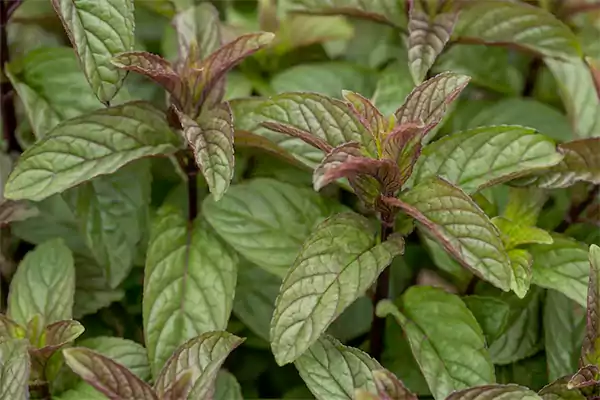
This variety is highly aromatic and has oval, pointed, and toothed leaves with flashes of red or bronze, followed by small purple flowers that appear in a tabular spike-like form.
Being a unique variety, it’s difficult to find it randomly. You can look for it during a local peppermint plant sale or in nurseries and add new flavours to your herb garden.
- Scientific Name – Mentha x piperita ‘Black Mitcham’
- Hardiness – 5-9 USDA zones
- Mature Size – 1-3 feet tall and 3-5 feet wide
- Sun exposure – Full sun to partial shade
4. Orange Peppermint
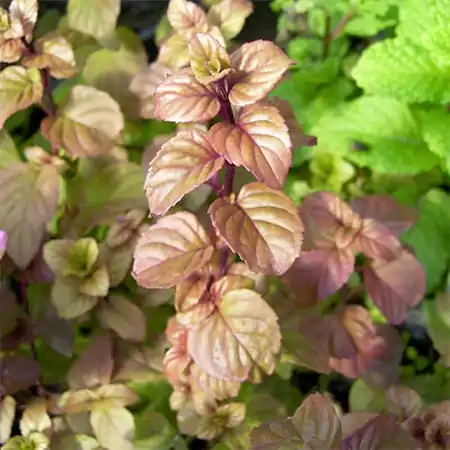
Orange mints are popular for their citrusy essence and odour, which makes them unique from the other varieties. The green-red foliage is slightly serrated at the edges and releases a fruity smell when crushed. It also features small lavender blooms in spike-like form.
- Scientific Name – Mentha x piperita f. Citrata ‘Orange’
- Hardiness – 5-9 USDA zones
- Mature Size – 30-90 cm tall and 90-150 cm wide
- Sun exposure – Full sun to partial shade
5. Variegated Peppermint
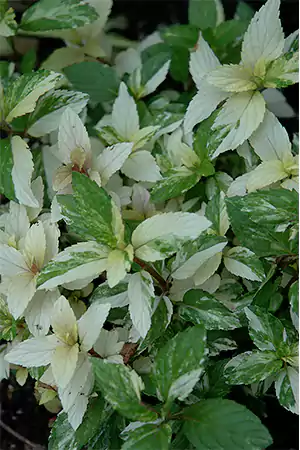
It is one of the less vigorous varieties of peppermints. One of its unique features is the striking green leaves with creamy white variegations, just like Marble Queen Pothos. It produced tiny, bold, beautiful, and blooming pink flower spikes, usually in a purple shade.
- Scientific Name – Mentha x piperita ‘Variegata’
- Hardiness – 5-9 USDA zones
- Mature Size – 1-3 feet tall and wide
- Sun exposure – Full sun to partial shade
6. Lime Peppermint
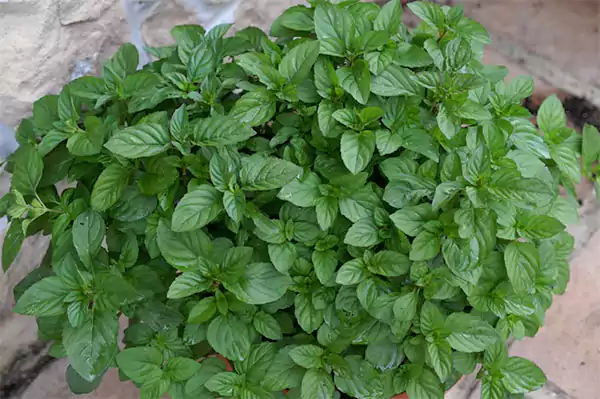
As the name suggests, these herbs offer a lemon-like fragrance and flavour and are widely used in beverages and infusions. It features bronze-green leaves with small purple flowers. They can be highly invasive if not restrained.
- Scientific Name – Mentha x piperita f. citrata ‘Lime’
- Hardiness – 5-9 USDA zones
- Mature Size – 16-36 inches tall and 18 inches to 5 feet spread.
- Sun exposure – Prefers full sun
7. White Peppermint
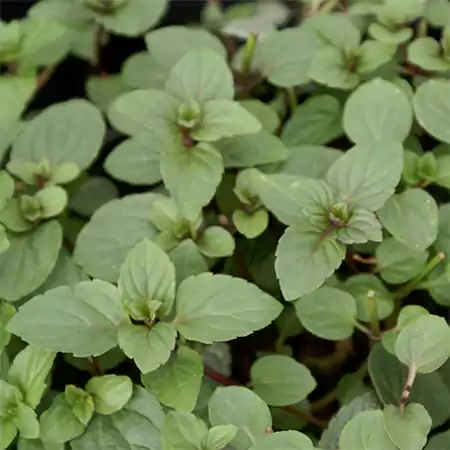
The white varieties are known for their light green foliage and pale purple flowers. Leaves are usually large, delicate, pointed, and lack the red pigmentation. It has a milder taste and is popularly used in teas and medicines.
- Scientific Name – Mentha x piperita officinalis
- Hardiness – 5-9 USDA zones
- Mature Size – 12-18 inches tall and wide
- Sun exposure – Full sun to partial shade
8. Agnes

A milder aroma and broader leaves with a rich green tint characterise the Agnes variety. It is abundant in menthol and rarely susceptible to fungal diseases and powdery mildews compared to other varieties.
- Scientific Name – Mentha x piperita ‘Agnes’
- Hardiness – 4-9 USDA zones
- Mature Size – 30-90 cm tall and 90-150 cm wide
- Sun exposure – Full sun to part shade
9. Black Peppermint
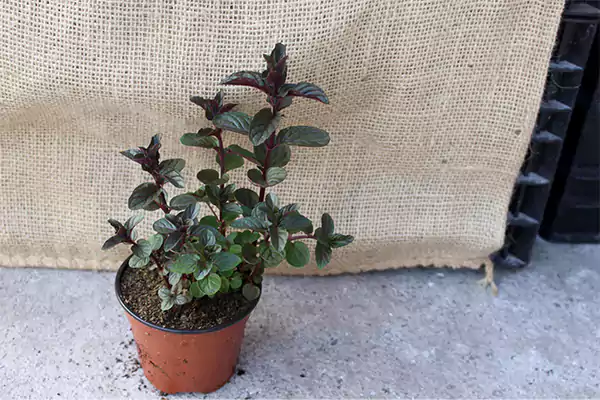
Black varieties are unique because of their deep purple-black leaves and dark purple stems. Growing these varieties will remind you of gothic blooms that grow wickedly beautifully and spread mysterious hues in your garden. It is also popular for its robust and spicy flavour.
- Scientific Name – Mentha x piperita vulgaris
- Hardiness – 5-9 USDA zones
- Mature Size – 1-3 feet tall and 3-5 feet wide
- Sun exposure – Prefers full sun
10. Crispa
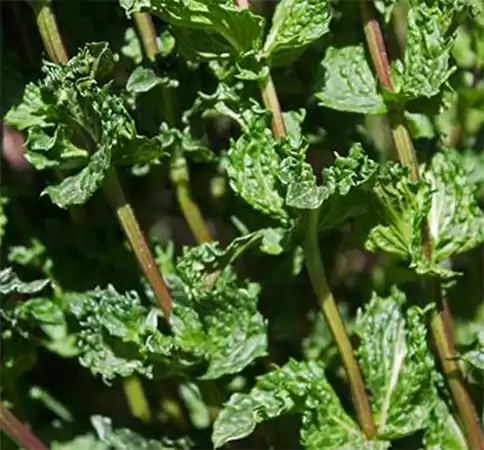
Also known as curly mint, this variety of piperita has ruffled, wrinkled leaves with a strong flavour. Its trailing habit and pale lavender to white flowers bring a charming essence, making it a perfect choice for containers, borders, or hanging plants.
- Scientific Name – Mentha x piperita ‘Crispa’
- Hardiness – 3-11 USDA zones
- Mature Size – 12-36 inches tall and 12-60 inches wide
- Sun exposure – Full sun to partial shade
One of the common factors in all the varieties is their flowers. Peppermint flowering usually occurs in mid to late summer in spikes of purple to lavender blooms.
All these varieties are unique in their ways. Whether you use the leaves for culinary purposes or bring a unique touch to your ordinary and boring gardens, these Mentha varieties can refresh your landscape design and instantly uplift your space with their elegant purple blooms.
Different Forms of Peppermint Mint Plant Use

M. piperita is one of the most versatile herbs. Its uses are not confined to just tea and beverages; it extends far beyond the kitchen.
Here are some ways to use these Mentha species in your daily life.
- Fresh Raw Leaves: You can enjoy the fresh leaves directly from the garden and use them in teas, salads, and garnishes. The refreshing sensation provides a cooling effect, especially during summer.
- Dried Leaves: One of the appreciated features of this herb is that the dried leaves retain their aroma and fragrance and can be stored for future use, whether for tea, potpourri, or indoor fresheners.
- Essential Oil: The essential oil extracts are widely valued for aromatherapy, digestive relief, headaches, skin ailments, and relieving stress and anxiety.
As per Research Gate, this oil is extracted from the whole plant above ground just before flowering and is rich in I-menthol, which is used for the treatment of IBS.
- Herbal Tea: Made from either fresh or dried leaves, this tea is a soothing beverage popularly used for digestion, stress relief and acidity.
- Culinary Extracts: Widely used in baking, candies, desserts, and beverages, the cool menthol flavour adds a distinct taste and essence to them. Its ability to remain fresh if stored properly makes it a kitchen favourite.
- Medicinal Preparations and Applications: It is a common constituent in various creams, balms, lotions, shampoos, and toothpastes.
Medicinal preparations such as tinctures, capsules, and infusions are also derived from these multifaceted herbs.
From being included in home gardens to herbal medicines, it adapts to unlimited forms, making it an essential part of wellness and holistic care.
Interesting Facts About Peppermint Plant
- According to the American College of Healthcare Sciences, peppermint was listed in the London Pharmacopoeia in 1972.
- The US peppermint oil market holds over 34% share globally, with a market size of USD 377.94 million in 2025 to USD 638.58 million in 2033, exhibiting a CAGR of 6.78%.
- M. piperita plants are considered invasive and need to be contained, or else they can spread vigorously over your garden.
Tips to Care for Peppermint Plant
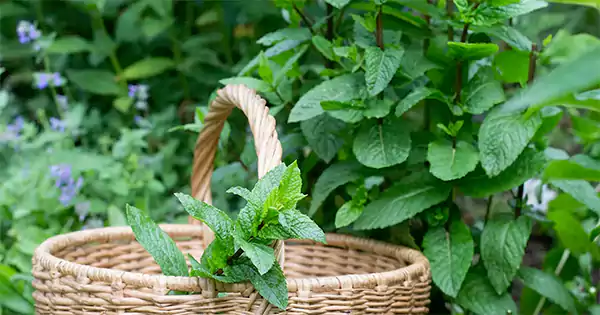
Although these lily-rails are hardy and robust, most of them thrive best when the optimum growing needs are met.
Take a look at the following care guide to grow peppermint and ensure the lush foliage and consistent harvest.
| Sunlight |
|
| Soil |
|
| Watering |
|
| Fertilizer |
|
| Pruning |
|
| Harvesting |
|
| Spacing |
|
Whether seasoned or a beginner gardener, with these simple tips, you can grow and easily balance your houseplant care with your remote work routine.
Tips & Tricks for Propagating Peppermint Like a Pro
The question arises – how do you grow peppermint plants?
These refreshing greens can be grown and propagated from either cuttings or seeds. Take a look at how to propagate the Mentha x piperita species like a pro.
Propagating from Cuttings
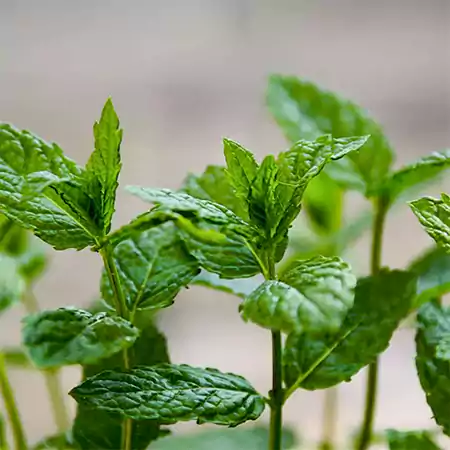
Propagating them through cuttings is a much faster, hassle-free, and reliable method.
- Start by selecting a healthy, non-flowering stem with plenty of leaves.
- The second step involves using sterile scissors or tools to cut the stem around four inches in length just below the leaf node.
- Remove the extra leaves below the nodes and immerse the cutting in a glass of water.
- Ensure to dip the bare stem and not the leaves. Change the water every few days to prevent stickiness and root rot.
- Patiently wait for the roots to form, which usually occurs in a few weeks.
- Once the roots are developed (2-3 inches long), you can transfer the cutting into a pot with a good soil mix.
After these successful steps, your new lily rail is ready to be transplanted into bigger pots or into garden beds outdoors.
Propagating from Seeds
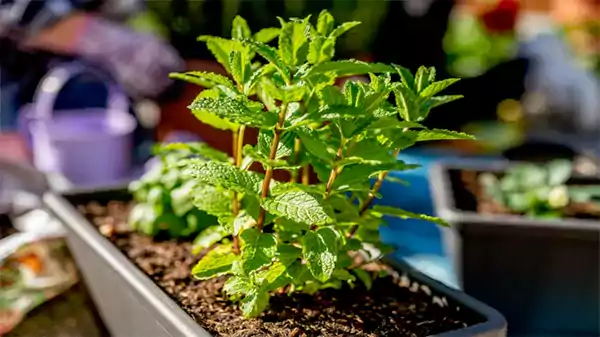
M. piperita seeds are small and sometimes less consistent because these herbs are usually a natural hybrid. Despite this, you can successfully grow and harvest them.
- Spread the seeds on the surface with a good soil mix. But make sure not to press them too hard into the soil.
- Make sure the sprinkled seeds get enough light and moisture for them to germinate. Under optimum conditions, peppermint seedlings germinate within 5-10 days.
- If you are using seedling trays, place them in a warm spot with indirect light. Directly sowing into garden beds successfully germinates once the dangers from frost have passed.
- Most importantly, space the seedlings 18-24 inches apart.
Once your seedlings have a few leaves on them, they are ready to be transplanted into big pots or directly into garden beds.
Whether you choose a fast and reliable cutting method or a slower seed route, propagating them is simple and can keep your herb supply thriving.
Peppermint Plant – Common Challenges & Solutions
After learning how to plant peppermint plants, it’s equally essential to know about the challenges you might face in your herb gardening journey.
From pests to fungal infections, knowing the cause and the fixes will help you keep your herb healthy and happy. Read further to explore more about the challenges and related solutions.
1. Yellowing Leaves

| Cause | Overwatering Poor drainage |
| Fix |
|
2. Powdery Mildew
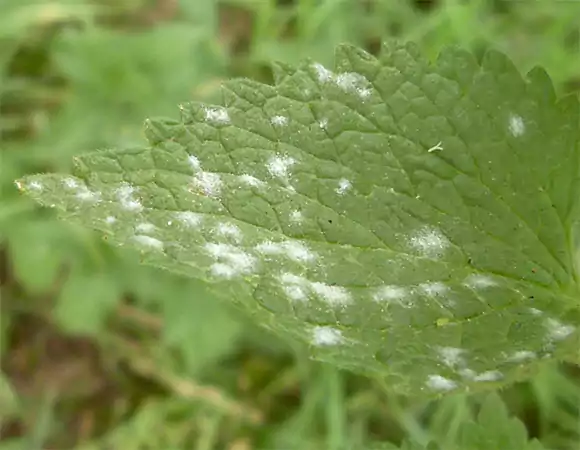
| Cause | High levels of humidity and warmth. Lack of air circulation in the soil. |
| Fix |
|
3. Root Rot
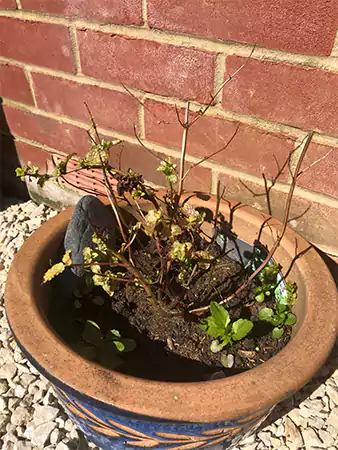
| Cause | Accumulation of excess water in the soil and poor drainage. Soggy soils due to overwatering |
| Fix |
|
4. Aphids & Spider Mites
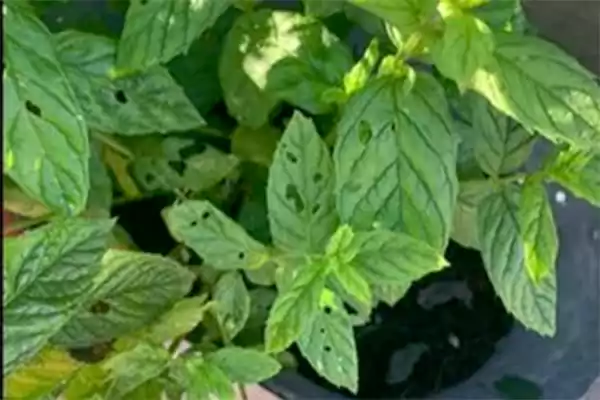
| Cause |
|
| Fix |
|
5. Fungus Gnats

| Cause |
|
| Fix |
|
6. Leggy Growth

| Cause |
|
| Fix |
|
Monitoring and taking timely actions can keep your plant safe from all these issues and concerns, and you can enjoy the unlimited benefits and refreshing aroma throughout the year-round.
Final Thoughts
With unlimited uses, calming appeal, and refreshing aroma, the peppermint plant is truly a blessing in disguise. It’s easy to grow, versatile, highly adaptable, and infinitely useful abilities making it every gardener’s first choice.
You can elaborate your kitchen gardens with countless varieties, and can reap the benefits of all. Be it your outdoor lawns, balcony gardens, hanging baskets, or kitchen containers, these plants uplift any space they are put into. Once you start to grow these cooling herbs, you will know why it has been cherished and celebrated for centuries.
Refer to this article and begin your peppermint plant journey today – discover its uses and bring freshness into your lives and gardens.
Is peppermint a perennial plant?
Yes, it is a perennial herb. It tends to return every year, under proper care and conditions.
What is the best way to propagate Mentha piperita?
You can propagate them either through cuttings or seeds. The cutting method is faster and more reliable compared to the slow seed method.
Can I grow M.piperita plants indoors?
They are highly adaptable and can flourish in pots and containers when kept indoors, provided they get enough light.
What does a peppermint plant look like?
It features dark green oval-shaped leaves with serrated edges and fuzzy texture, followed by square reddish-purple stems and spikes of lavender-pinkish blooms that grow in clusters.
- Peppermint Plant – Britannica
- Peppermint and Its Functionality: A Review – Research Gate
- Peppermint Plant Science – Michigan State University
- An Overview of Peppermint Herbal Plant – International Journal of Pharmaceutical Research and Applications

